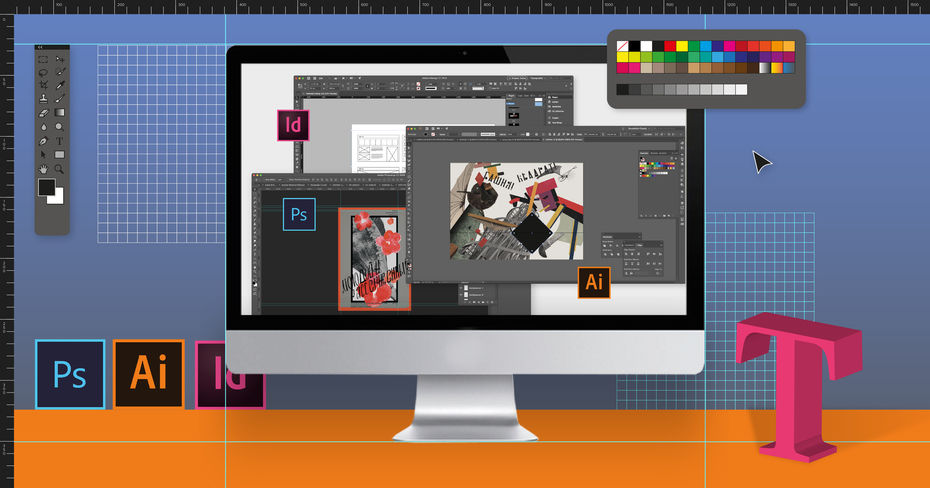People are gradually getting used to relying on smart home technology, talking to digital assistants, traveling, furnishing homes, and trying on clothes through augmented reality. At the same time, people continue to be surrounded by real, tangible objects. With the help of technology, these things also strive to become smarter, but also more interesting, brighter, more contactable, and friendlier. Six inspiring examples from modern designers will tell us what this results in.

The unity of function and image
“Designers need to fantasize and work on what is now impossible. And new technology is definitely and most often the engine of new ideas,” says Yaroslav Rassadin, a Russian industrial designer, winner of two prestigious European Red Dot awards. When his team was developing a premium collection of Bobber thermoses, it was inspired by the idea of a “space” thermos that would look as if it had been found on Mars. “We really wanted to achieve this feeling, to create a precise and solid image with the highest technology in such an everyday object,” says the designer. As a result, Bobber thermoses are able to keep their drinks warm for up to two days. It is achieved due to equipment of the thermos with a narrow neck with a special step inside and a long narrow stopper with heat-insulating filler. And seamless technology is used to produce the flasks that are inside the thermos.
Or take the ETCH Clock, a model designed by Swiss architect Johnny Vaccaro and 42Foundry SA. It is another realized fantasy of the continuity and transience of time. Every 30 seconds, time appears on the watch, displayed in 3D numerals on the dial membrane – and then disappears. The time will come again when the watch’s touch sensors pick up sounds or noises from the world around it. The time pulsation can, of course, be set via a mobile app.
Familiar things in a new format
A new “orange lampshade above the table” format is the sound-absorbing Derby LED light fixture (Linea Light Group). The shape of the lampshade is inspired by a ladies’ hat with fields worn by spectators of noisy derby races. Derby’s light emanates from a narrow rectangular diffuser located in the center. And the inside of the lampshade is made of sound-absorbing material – it blocks out extraneous noises in the room, but improves the acoustics under the lampshade, so that the voices of those seated under it at the table or in chairs can be heard better. The built-in Unified Glare Rating system allows you to control the lamp using a special app.
Another example of the implementation of the usual functionality in a new form is the “magic ring” Aeklys by Starck. It replaces payment cards, transport passes, business cards and contactless identification devices. In short, it opens all the doors in the literal and figurative sense. The manufacturer guarantees Liquid Guard’s antiviral and antibacterial properties. The developers of the new gadget are young entrepreneurs Jérémie Neyroux and Fabien Raiola from the company Icaretechnilogies. They proposed their idea to European design maestro Philippe Starck. “Creating such high-tech projects responds to consumer demand for a better quality of life,” say Neyroux and Raiola. – Whether it is the creation of a new object, space or service, design is a way to integrate new technologies to create new solutions to pressing problems.”

New Modules
Balance of Being, a concept for a line of intelligent products for every day, a kind of household HALF, clearly shows how new technologies become a natural part of everyday life rituals. The developers are London-based designer Benjamin Hubert, the founder of Layer studio, and Panasonic. The line includes several gadgets. They know how to properly cook food (or cook the right food), massage your head, stimulate hair growth and take care of your skin. For example, the device called Shot uses a smart camera to perform a visual analysis of the user’s skin, and then gives him the best smoothie recipe from fruits and vegetables to replenish his body with the necessary vitamins and minerals. Shot is immediately ready to make it, as long as you have the right ingredients. Despite the ultramodern capabilities of gadgets, they are made of natural materials – ceramic, wood, textiles. That once again emphasizes their naturalness and homeliness.
And here is an example of a different kind: sculptures, furniture, acoustic panels and even houses, all made of fabric. That’s the range of uses for Bouncing Patterns three-dimensional tubular jacquard. It can be flexible and rigid, foldable and self-supporting, able to absorb shocks or sounds, protect from light or cold. For all its futuristic appeal, the pleated texture of the fabric is graceful, supple and tactile. It was modeled and woven by Juliette Bertonneau, a textile designer of Belgian origin. She uses a digital loom and innovative textile fibers to make Bouncing Patterns. “As a textile designer, I strive to rethink the use of existing technology to challenge it, to go beyond it. In my opinion, innovation is not only about new technology, but also about rethinking production processes and the materials used,” she believes.
